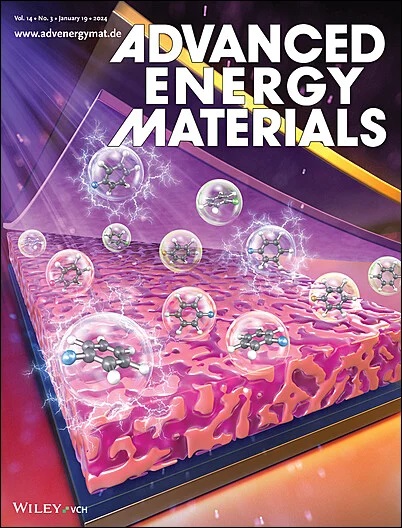Advancing Carriers Mobility in MnSb2Te4 Thermoelectrics via Tailored Textures and Vacancy Modification
IF 24.4
1区 材料科学
Q1 CHEMISTRY, PHYSICAL
引用次数: 0
Abstract
Enhancing carrier mobility plays a crucial role in significantly improving thermoelectric performance. However, due to the lack of a systematic strategy, achieving high mobility remains an elusive goal for most compounds. In this study, the hot-forging method is applied to polycrystalline MnSb₂Te₄, achieving a remarkable 300% improvement in carrier mobility. Through electron backscattering diffraction microstructural analysis, it is demonstrated how optimizing textures can accelerate carrier movement in MnSb₂Te₄ bulk materials. Moreover, theoretical calculations, combined with experimental positron annihilation spectroscopy, reveal that Te vacancies help counteract intrinsic cation defects, leading to a simultaneous increase in carrier mobility. As a result, the hot-forged MnSb₂Te₄ specimen, with a diameter of 15 mm, reaches a record-high maximum figure of merit (ZT) value of 1.3 at 773 K and an impressive average ZT of 0.7 between 323 and 773 K. The experimental output efficiency of 4.6%, observed at 773 K on the MnSb₂Te₄-based single-leg module, further confirms that the improved transport properties are due to the enhanced carrier mobility. This comprehensive study offers valuable insights into mobility enhancement in MnSb₂Te₄ and provides a promising direction for exploring similar improvements in other thermoelectric materials.

求助全文
约1分钟内获得全文
求助全文
来源期刊

Advanced Energy Materials
CHEMISTRY, PHYSICAL-ENERGY & FUELS
CiteScore
41.90
自引率
4.00%
发文量
889
审稿时长
1.4 months
期刊介绍:
Established in 2011, Advanced Energy Materials is an international, interdisciplinary, English-language journal that focuses on materials used in energy harvesting, conversion, and storage. It is regarded as a top-quality journal alongside Advanced Materials, Advanced Functional Materials, and Small.
With a 2022 Impact Factor of 27.8, Advanced Energy Materials is considered a prime source for the best energy-related research. The journal covers a wide range of topics in energy-related research, including organic and inorganic photovoltaics, batteries and supercapacitors, fuel cells, hydrogen generation and storage, thermoelectrics, water splitting and photocatalysis, solar fuels and thermosolar power, magnetocalorics, and piezoelectronics.
The readership of Advanced Energy Materials includes materials scientists, chemists, physicists, and engineers in both academia and industry. The journal is indexed in various databases and collections, such as Advanced Technologies & Aerospace Database, FIZ Karlsruhe, INSPEC (IET), Science Citation Index Expanded, Technology Collection, and Web of Science, among others.
 求助内容:
求助内容: 应助结果提醒方式:
应助结果提醒方式:


